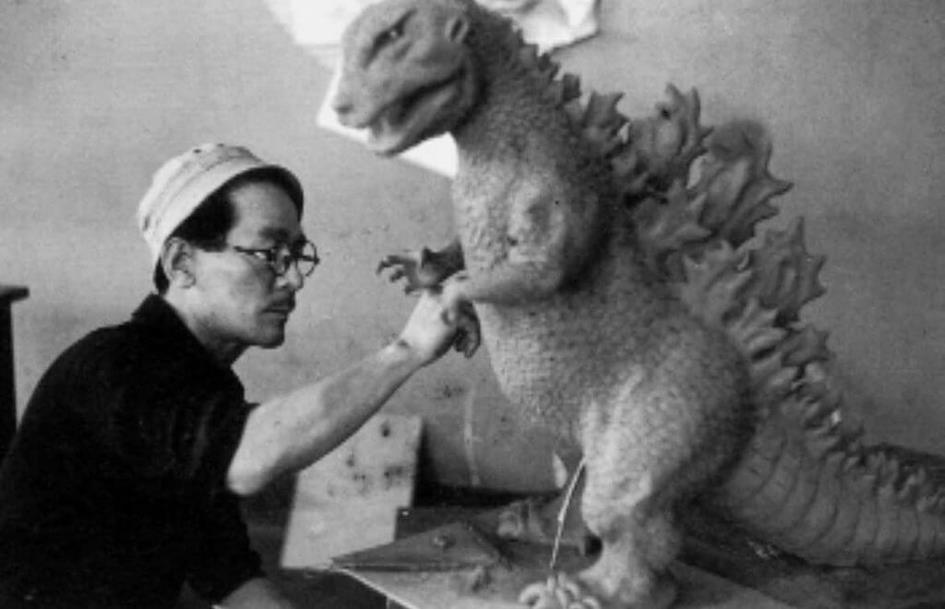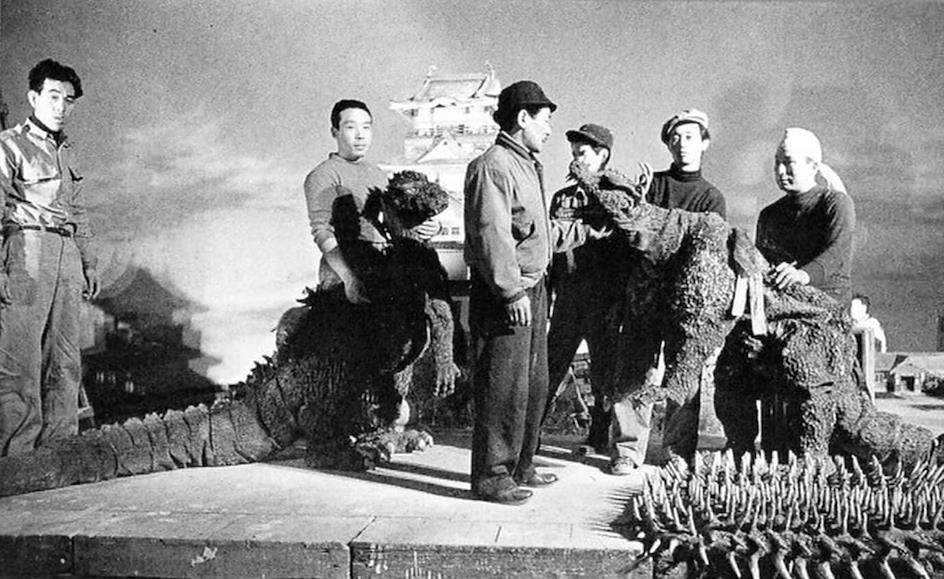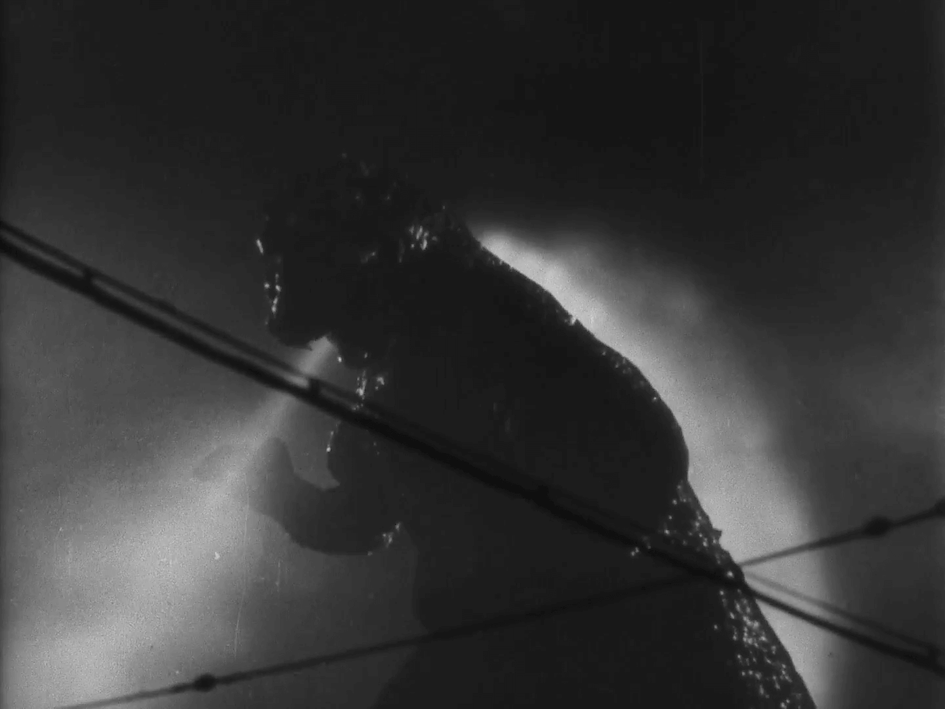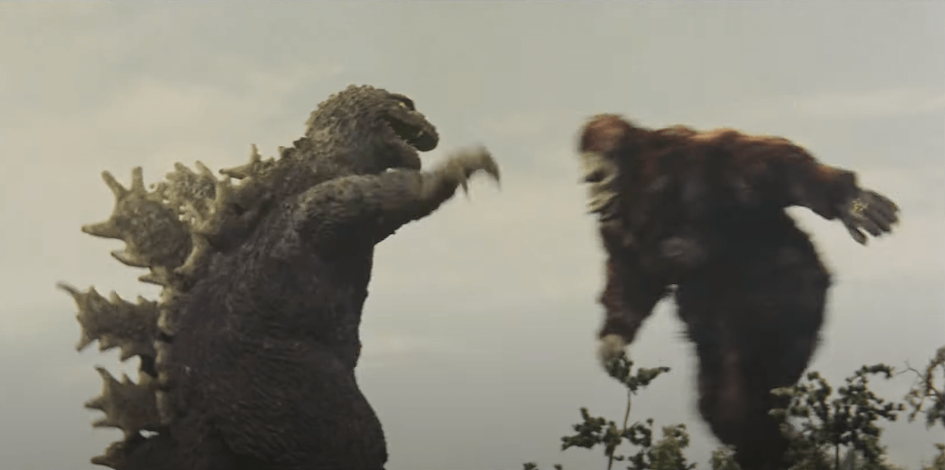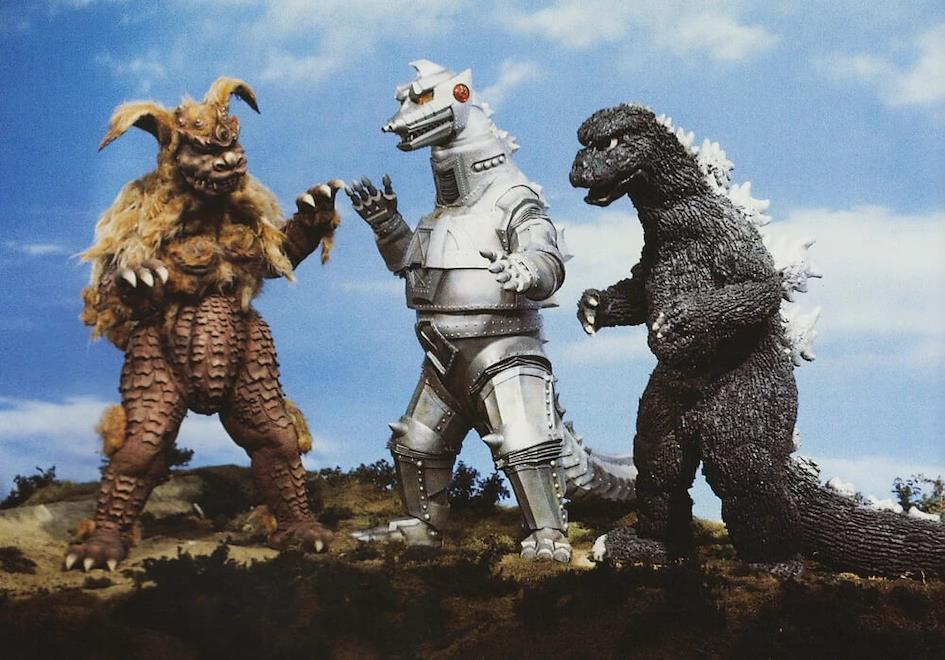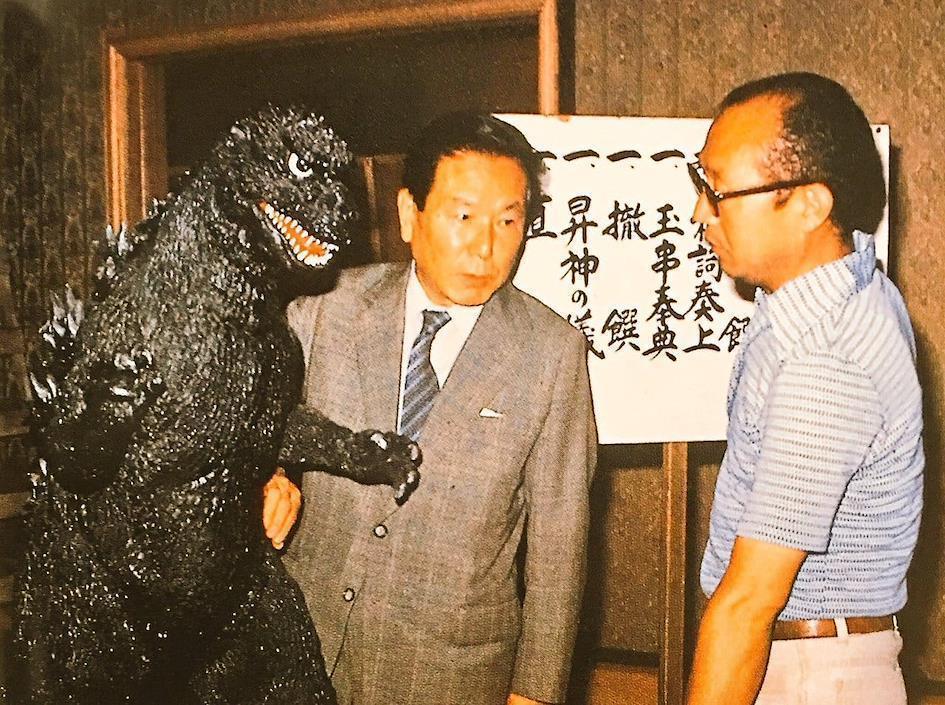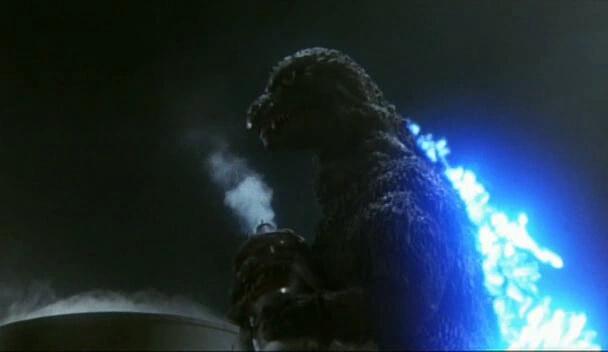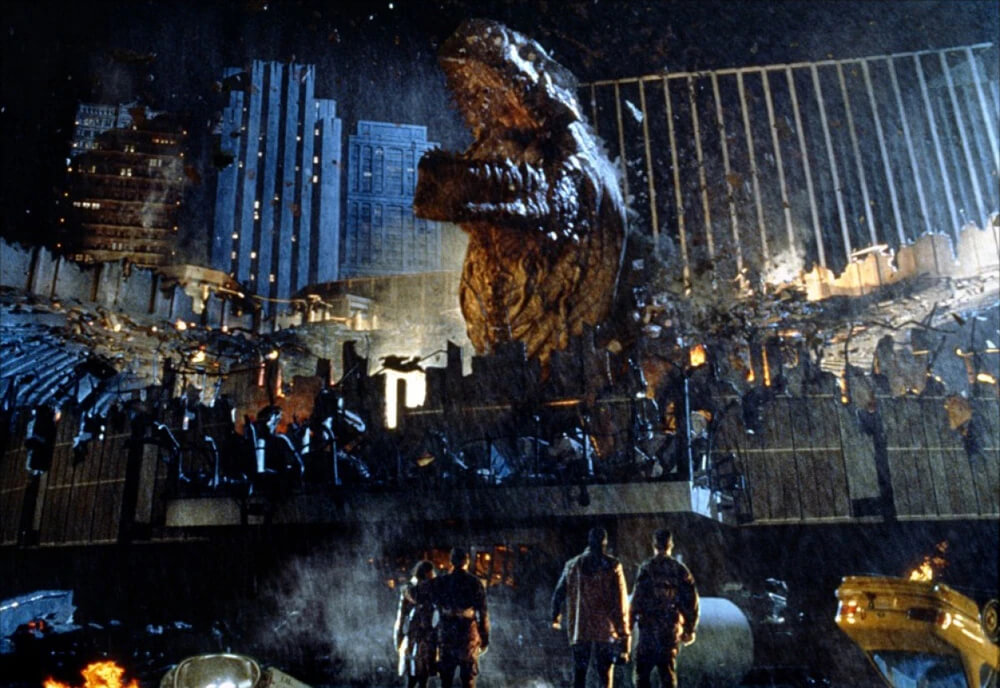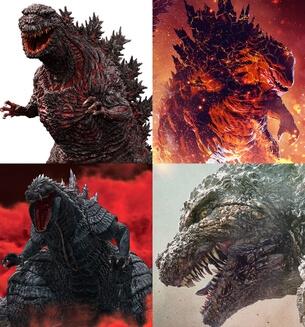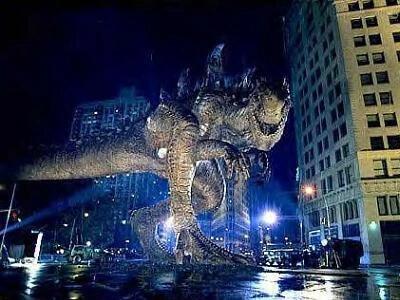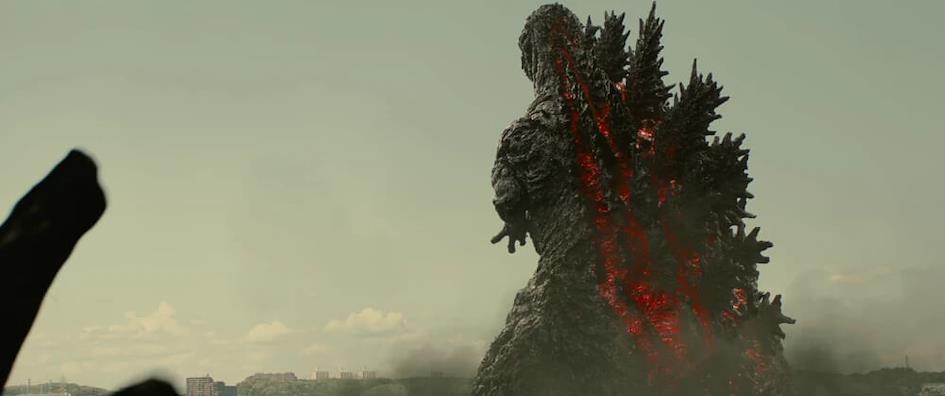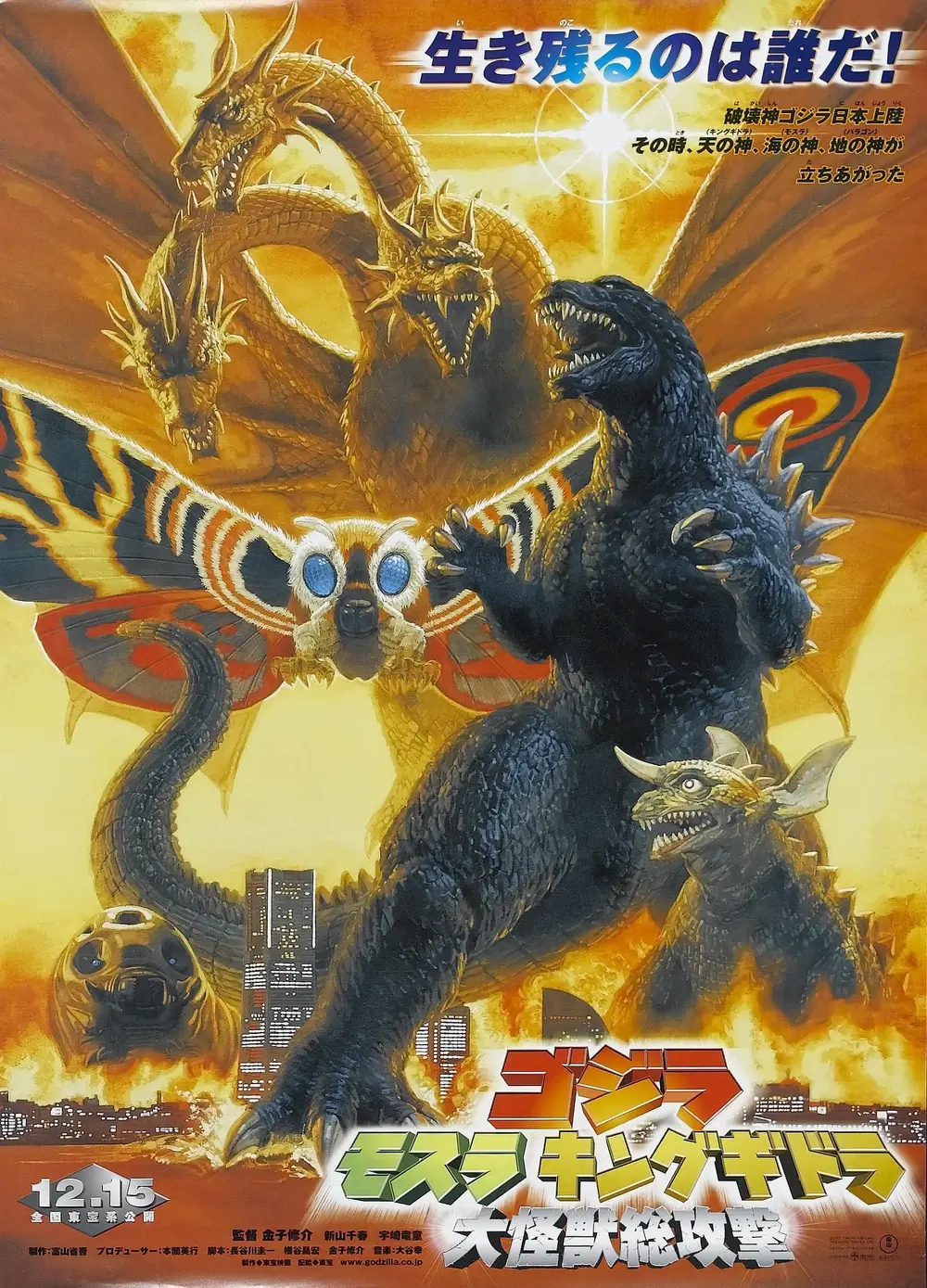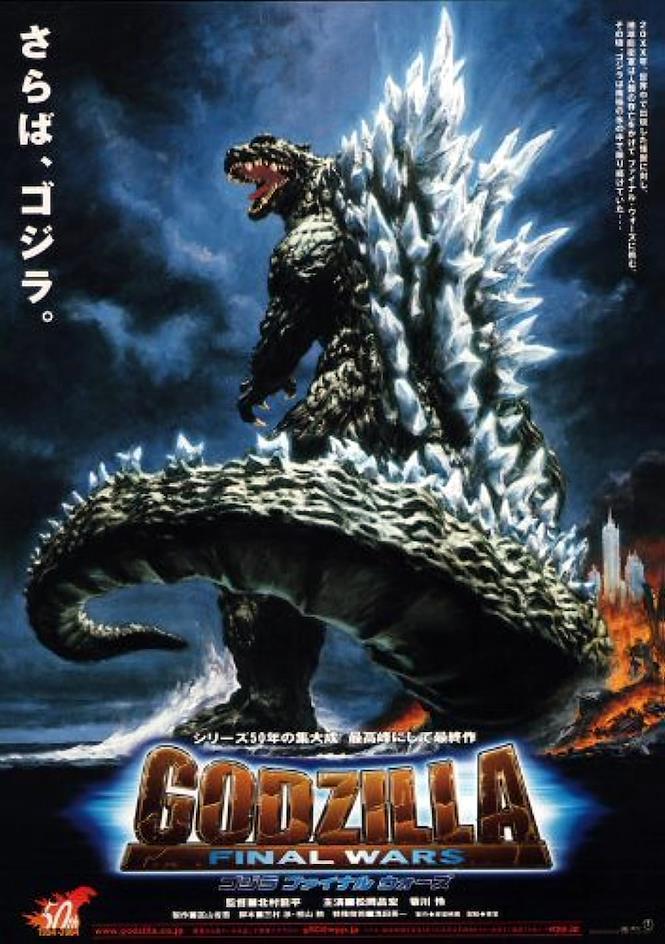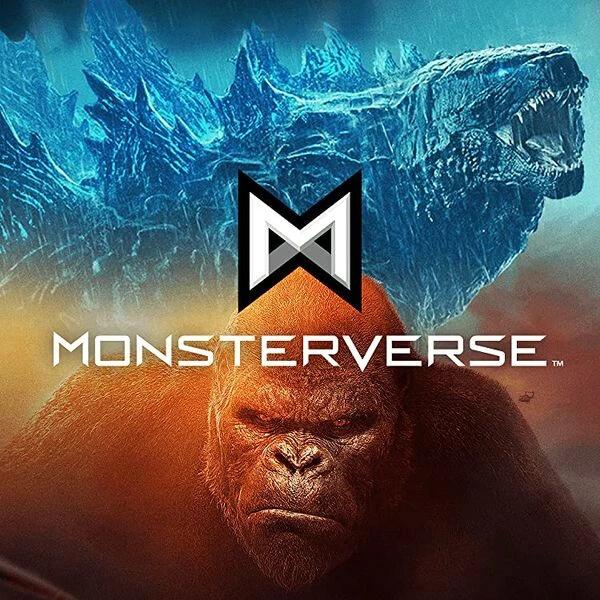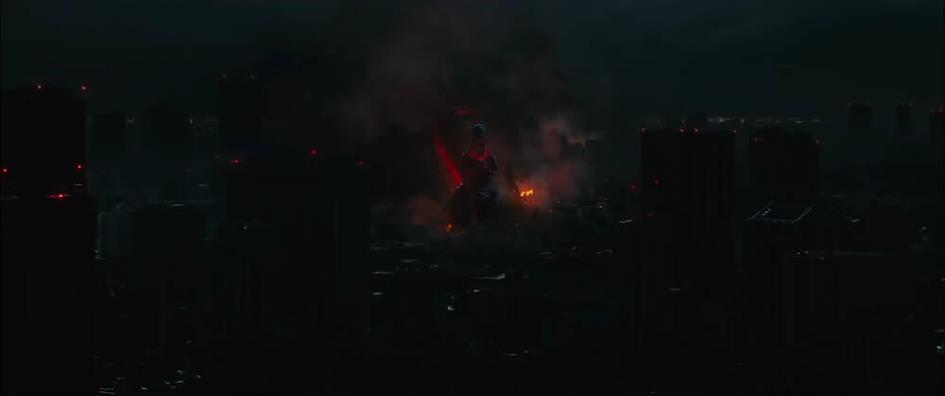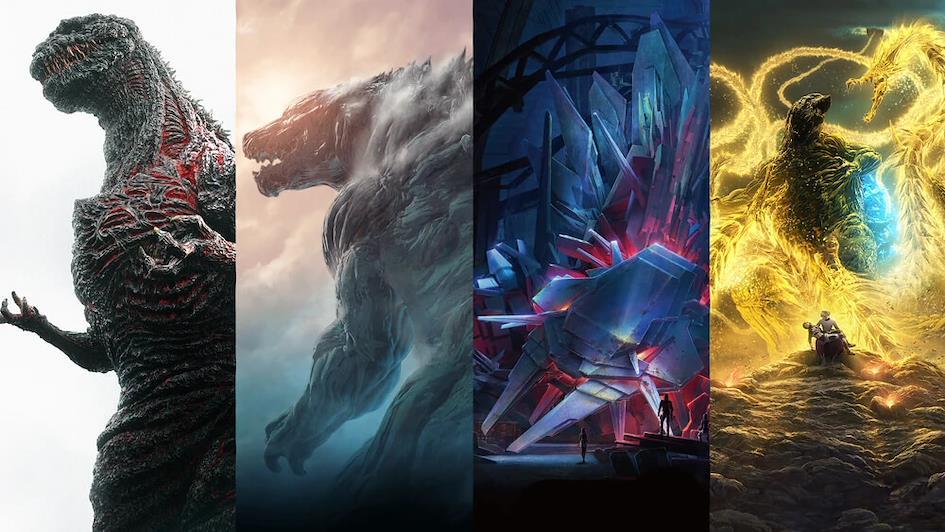[ad_1]
Godzilla is one of the most iconic Japanese creations in cinema history. Toho’s quintessential Kaiju has remained relevant for nearly 70 years, making Godzilla the longest-running movie franchise in the world.
Toho’s Godzilla movies have tackled everything from socio-political issues to real-world events and tragedies. They embody Japan’s greatest fears and the country’s greatest strengths. Toho managed to create an icon that deeply resonated with its different viewers.
Godzilla’s popularity has allowed Toho’s Kaiju to cross borders and see success in the west through various movie and animated TV series adaptations. Even today, Godzilla movies continue innovating and further exploring the Kaiju genre.
In this article, we will be exploring the many Godzilla movies from the 50s to the present. We will discuss the different interpretations of each generation that shaped Godzilla into who he is today. And of course, we will talk about the real-world inspirations that make Godzilla such a charming, deep, and complex character.
Godzilla Movies Throughout the Years
Showa Era – Godzilla’s Origins (1954-1975)
The Showa Era is the name given to the period that encompasses the first generation of Godzilla movies. It is the longest era, consisting of 15 films from 1954 to 1975.
The Showa series served as the foundation of Godzilla’s character. During these two decades, Godzilla was born and shaped into the icon he is today.
At the beginning of the Showa era, Toho introduced Godzilla as a heartless destructive metaphor for the dangers of the atomic bomb. He was then shaped into Japan’s savior and hero figure.
While the overall quality of Showa-era films was a mixed bag, they laid down the foundations for future Godzilla films to follow. For instance, Ishiro Honda’s original Godzilla movie has directly inspired most modern Godzilla iterations. In addition, the themes and ideas, such as Godzilla’s role as a hero, have been refined in later Godzilla movie eras.
And lastly, the Showa era introduced many of Toho’s beloved Kaijus. Series mainstays, such as Mothra, King Ghidorah, and Mechagodzilla, would constantly reappear in later Godzilla films.
Also Read: Your Guide To Character Cafes in Japan
Godzilla’s clearest defining trait during the Showa era is his anthropomorphic nature. Showa-era Godzilla, particularly in movies in the 1960s and 1970s, is the only one depicted to show human emotions, gestures, and the capacity to form human-like bonds and relationships with other Kaiju. Godzilla even straight-up had dialogue in some films.
Interestingly, the Showa era is the only period where Godzilla’s size remained constant. Unlike future iterations, Godzilla is 50 meters tall in all 15 Showa movies. While many of the films now look dated and goofy, the Showa era is an essential piece of Godzilla history.
Find Godzilla Merch For Your Collection Today!
Godzilla in the 50s
Godzilla made his debut in Ishiro Honda’s “Gojira (Godzilla)”, released in 1954. Honda introduced Godzilla as a 50-meter-tall prehistoric monster awakened and mutated by repeated Hydrogen bomb tests. Godzilla is shown to have no emotion or sympathy for mankind. All he had was the rage that drove him to destroy everything in his path.
Unlike many later Godzilla films, Gojira is unique for focusing not only on Godzilla’s rampage, but also heavily emphasizes the aftermath of Godzilla’s attacks. Numerous human casualties are shown to be caught in the crossfire between Godzilla and the Japanese army.
In addition, the themes of the film are incredibly dark. Honda did not hesitate to make his anti-war and anti-nuclear messages very clear.
The film concludes on a grim note. Japan defeated Godzilla through the use of the “Oxygen Destroyer”, a manmade abomination. Humanity’s only solution to Godzilla’s violence was also violence. And in the aftermath, the only result was tragic losses for all parties.
Also Read: How To Use ZenMarket To Find Your Perfect Purchase From Japan
Honda’s dark interpretation of Godzilla was a box-office success. Not only did it have some of the most groundbreaking special effects at the time, but it also deeply resonated with the Japanese people. Its success immediately led to Toho greenlighting a sequel.
“Godzilla Raids Again” was released the following year, in 1955. The film introduced a new Godzilla, who would later be the main character of the Showa era films. Anguirus was also introduced as the main antagonist of the film. Gojira’s sequel traded the original’s deep philosophical discourse in favor of the grander fights between the two Kaijus. Despite lacking the substance and charm of the original film, Godzilla Raids Again helped set the stage for more Godzilla films.
Godzilla would receive a heavily edited American re-release in 1956. The title was changed to “Godzilla: King of the Monsters”, and included Hollywood actor Raymond Burr in the story. Naturally, the heavily Americanized version did not have the same impact as Honda’s original film.
Godzilla in the 60s
By the time the 60s came, Toho’s Godzilla was already a household name. So the next natural move was for Toho to pit Godzilla against America’s most popular monster, King Kong.
Many fans regarded “King Kong vs. Godzilla” (1962) as the most ambitious movie crossover of the 60s. It took Godzilla Raids Again‘s action-packed scenes to the next level. Again, the movie lacked a solid story but made up for it with grander fights. King Kong vs. Godzilla would also be both characters’ colored and widescreen debut.
King Kong vs. Godzilla was followed up by “Mothra vs. Godzilla” in 1964. This time, Toho pitted Godzilla against Mothra, another iconic Toho creation. Toho used the same Kaiju battle formula as King Kong vs. Godzilla to replicate the previous film’s success.
In 1964, Toho decided to pump out sequels annually. It was during this period when Toho decided to turn Godzilla into a hero. In “Ghidorah, the Three-Headed Monster”, Godzilla’s most iconic rival, King Ghidorah, was introduced. In this film, Godzilla transitioned into the series’ protagonist.
Shop Limited Edition Godzilla Merch Now!
It was the first time Godzilla worked together with other Kaiju to beat his opponent. Godzilla worked with Mothra and Rodan in this film to save the earth. It is arguably the first instance of a superhero team-up in modern cinema.
Throughout the next films in the 1960s, Godzilla would be continuously anthropomorphized into a playful superhero. In “Son of Godzilla” the film was directly targeted at children with its father and son-adventure theme.
1960s Godzilla films culminated with “Destroy All Monsters”. It featured every Godzilla character up to that point in the grandest Kaiju brawl of the 60s.
Godzilla in the 70s
By the time the 1970s came, Godzilla was already a far cry from what he was in Honda’s original film. Godzilla was no longer a force of nature. Instead, he was closer to other Tokusatsu superheroes, such as Ultraman and Kamen Rider. The change in Godzilla’s character was Toho’s response to television shows competing against movies. Godzilla’s popularity also started to decline during this period. As a result, Godzilla’s final five Showa films in the 70s received significant budget cuts.
1970s Godzilla films produced some of the most outrageous moments in Godzilla movies. Infamous 70s Godzilla scenes include the Godzilla Drop Kick in “Godzilla vs. Hedorah” (1971) and Flying Godzilla during “Godzilla vs. Megalon” (1973).
There were still movies that tackled ongoing real-world issues, such as Godzilla vs. Hedorah’s anti-pollution message. But at the end of the day, 1970s Godzilla movies were made purely for family entertainment.
Also Read: Japanese Character Cafes To Visit
“Terror of Mechagodzilla” (1975) was the final Godzilla movie in the Showa era. Toho recruited Ishiro Honda, who previously directed most Godzilla films until Destroy All Monsters, to make the series great again.
Unfortunately, Terror of Mechagodzilla failed at the box office. It would even end up as the lowest-grossing Godzilla movie of all time. As a result, Toho was forced to retire Godzilla, ending his 21-year run.
Showa Era Godzilla Movies
- Gojira/Godzilla (1954)
- Godzilla Raids Again (1955)
- Godzilla, King of the Monsters (1956: USA Re-release of Gojira)
- King Kong vs. Godzilla (1962)
- Mothra vs. Godzilla (1964)
- Ghidorah, the Three-Headed Monster (1964)
- Invasion of Astro-Monster (1965)
- Ebirah, Horror of the Deep (1966)
- Son of Godzilla (1967)
- Destroy All Monsters (1968)
- All Monsters Attack (1969)
- Godzilla vs. Hedorah (1971)
- Godzilla vs. Gigan (1972)
- Godzilla vs. Megalon (1973)
- Godzilla vs. Mechagodzilla (1974)
- Terror of Mechagodzilla (1975)
Shop Official Godzilla Goods Today!
Heisei Era – Godzilla’s Rebirth (1984-1995)
The second generation of Godzilla films came during the Heisei era. The Heisei series is best known as the “rebirth of Godzilla”. During this period, Toho successfully reintroduced their most iconic Kaiju to 1980s Japan.
Heisei Godzilla films went back to Godzilla’s roots. Toho ditched Godzilla’s friendly and often goofy child-friendly character from the 70s and returned to his menacing original design.
In addition, Toho went the extra mile and developed Godzilla into the tragic anti-hero he is best known today. And, of course, Heisei Godzilla films managed to reiterate the powerful anti-war and denuclearization messages from Honda’s original Godzilla film.
Also Read: Complete History of Comiket
The Heisei era has the most cohesive and powerful storytelling out of all the Godzilla film eras. Each film is directly connected and even features recurring characters. It is also the only Godzilla film era to feature a definitive conclusion.
The Heisei series’ depiction of Godzilla is also worthy of praise. Toho portrayed Godzilla as a creature with emotions without anthropomorphizing him. By the end of the Heisei era, Godzilla fans became emotionally attached to the character.
The Heisei era also has the most interesting monster designs. Biollante, SpaceGodzilla, and Destroyah are all abominations that have a twisted relationship to Godzilla. Overall, the Heisei era will forever be celebrated as one of the highest points of Godzilla’s career.
Godzilla in the 80s
After a nine-year hiatus, Godzilla finally returned to Japanese cinemas. “The Return of Godzilla” (1984) served as a direct sequel to Godzilla (1954). It ignored all events during the Showa era, thus creating a new separate Heisei timeline.
The film takes place 30 years after Godzilla (1954). A new Godzilla emerges to once again terrorize Tokyo. However, this time around, there are more threats and complications brought upon by the Cold War.
Godzilla’s attack on a Soviet nuclear submarine further escalated tensions between the superpowers. And later in the film, an accidental nuclear launch on Japan ups the stakes as Godzilla isn’t the only threat anymore.
Unlike the original film, The Return of Godzilla ends with Godzilla being lured and trapped in a volcano. The tragic ending paints Godzilla as a more complex character which the rest of the Heisei films would further expand on.
The Return of Godzilla is notable for increasing Godzilla’s size to 80 meters to match the taller buildings of 1980s Japan. This trend would continue in later Godzilla films.
With the success of the Return of Godzilla, Toho released its sequel in 1989. Godzilla vs. Biollante is best known for introducing new ideas to the series. In the film, Godzilla faces a monster born from a scientist’s desire to revive his daughter.
However, the result is a Kaiju amalgamation of human, plant, and Godzilla DNA. The film also introduces psychic Miki Saegusa, who appears in every future Heisei film. Miki Saegusa’s character helps the audience understand Godzilla better and adds more depth to the human characters.
Godzilla in the 90s
With the success of the two Godzilla films in the 1980s, Toho would release annual Godzilla films from 1991 to 1995. Godzilla films in the 1990s were heavily influenced by themes such as time travel, technological innovation, and space exploration. Toho would also borrow elements from popular American films, such as “Back to the Future Part II”, “Aliens”, and the “Indiana Jones” franchise.
The latter half of the Heisei era would also see Godzilla’s size increase to 100 meters. The first three films in the 1990s reintroduced King Ghidorah, Mothra, and Mechagodzilla to the Heisei era.
In “Godzilla vs. King Ghidorah”, humans from the future (known as Futurians) swayed the Japanese people into “deleting” Godzilla by time-traveling to the past. It was then revealed that the Futurians’ true plot was to eradicate Japan with the use of King Ghidorah.
Fortunately, Godzilla’s tie to the atomic bomb made his creation inevitable. And thus, Godzilla was able to beat King Ghidorah and later, Mecha-King Ghidorah.
Godzilla vs. King Ghidorah was the first Heisei film to alter Godzilla’s origin story. Instead of being a mutated prehistoric mythical beast, Heisei Godzilla was revealed to be a mutated dinosaur known as “Godzillasaurus”.
The turning point for Heisei Godzilla was during “Godzilla vs. Mechagodzilla II”. This movie turned Godzilla into a father figure by introducing “Godzilla Junior”.
Toho showed how Godzilla could carry emotions without losing his animalistic nature. Godzilla’s relationship with Godzilla Junior is further expanded when Godzilla has to save Junior during the events of “Godzilla vs. SpaceGodzilla”.
Also Read: Your Guide To Godzilla Through The Years
The Heisei era concluded with Godzilla’s epic final battle in “Godzilla vs. Destroyah”. In the film, Godzilla suffers from a nuclear meltdown, earning him his classic “Burning Godzilla” look. The stakes become higher when Destroyah, a Crustacean mutated by the Oxygen Destroyer from Godzilla (1954), emerges.
The film ended with the emotional death of Godzilla. However, Godzilla Junior absorbs the radiation from Godzilla and becomes the new King of the Monsters.
List of Heisei Era Godzilla Movies
- The Return of Godzilla (1984)
- Godzilla 1985 (1985 – USA Re-release of The Return of Godzilla)
- Godzilla vs. Biollante (1989)
- Godzilla vs. King Ghidorah (1991)
- Godzilla vs. Mothra (1992)
- Godzilla vs. Mechagodzilla II (1993)
- Godzilla vs. SpaceGodzilla (1994)
- Godzilla vs. Destoroyah (1995)
American Godzilla (1998)
Ever since the original Godzilla film, American studios have been dubbing and altering Godzilla films for western audiences. But in the late 90s. Toho sold Godzilla’s rights to Sony, allowing them to create an American version of Godzilla.
The result of Sony and their subsidiary Tristar’s efforts was “Godzilla”, released in 1998.
Unfortunately, TriStar’s Godzilla film was a complete failure. Fans, critics, and even Toho themselves were massively disappointed with what the American studio chose to do with Godzilla.
TriStar chose to drastically reimagine Godzilla into a more realistic monster. His stance and appearance closely resemble a Tyrannosaurus Rex, while other features resemble an Iguana.
In addition, 1998 Godzilla lacks Toho Godzilla’s radioactive breath. He also moves much faster but appears to be weaker. And lastly, Godzilla’s iconic roar has been modified to sound more like an elephant. In summary, in 1998, Godzilla shared nothing in common with Toho’s Godzilla other than his name.
Reception for the film was so bad that Sony chose to cancel its planned sequel. Godzilla: The Series did push through to continue the story. But overall, Godzilla (1998) would go down in history as a character that neither the fans nor Toho recognize as a proper incarnation of Godzilla.
Also Read: Surprisingly Dark Anime You Should Check Out
Millennium Era (1999-2004)
After Sony’s American Godzilla film failed, Toho immediately kickstarted the millennium era to restore Godzilla’s glory. It is the shortest Godzilla era lasting only six years. Unlike the Showa and Heisei eras, the Millennium-era films are not interconnected.
Instead, each film is a standalone story. The only exception is the Kiryu Saga (Godzilla Against Mechagodzilla and Tokyo S.O.S.).
The Millennium era shifts Godzilla’s role as an anti-hero from the Heisei into a more neutral animalistic character. In Godzilla 2000, he was even regarded at the end of the film by one of the characters as the “Punisher of Mankind.”
Despite being unable to tell a cohesive story, the Millenium era still greatly contributed to the Godzilla franchise. “Godzilla 2000” is best known for introducing Godzilla’s scaly look, which helped define his later incarnations in the 2000s.
The Millennium era also introduced new concepts, such as Godzilla being possessed by World War II victims in “Giant Monsters All-Out Attack” and 1954 Godzilla possessing Kiryu (Mechagodzilla) in the Kiryu Saga.
Toho shrank Godzilla during the Millenium era, close to his original Showa era size. All Millenium Godzilla films except for Final Wars and Godzilla, Mothra, and King Ghidorah (GMK) featured a 55-meter-tall Godzilla.
For GMK, Toho made Godzilla taller at 60 meters. And in Final Wars, Toho substantially increased Godzilla’s size to 100 meters.
Godzilla Final Wars (2004)
The Millenium era also celebrated Godzilla’s 50th anniversary in Godzilla Final Wars. In many ways, Final Wars is the Millenium era’s version of Destroy All Monsters.
In Final Wars, the Earth Defense Force (E.D.F.) recruits enhanced humans (mutants) to battle Kaiju. Through their efforts, they defeated Godzilla and trapped him in ice.
However, a much greater threat emerges when aliens known as Xiliens invade earth. The Xiliens take control of Earth’s Kaijus and most of the E.D.F.’s mutant forces, leaving earth’s forces defenseless. Fortunately, a small group of earth’s remaining heroes manages to free Godzilla and help defeat the Kaijus unleashed by the Xiliens.
Godzilla Final Wars features most of Toho’s popular Kaijus from the Showa era. These include Mothra, Rodan, Gigan, King Ghidorah, Minilla, Ebirah, Hidorah, and even 1998 American Godzilla.
The film is notorious for showing Toho’s Godzilla obliterating 1998 American Godzilla, asserting Japan’s Godzilla as the one true Godzilla. The film also notably adds human vs. Xillien fight scenes reminiscent of early 2000s action movies. Godzilla Final Wars ends with Godzilla returning to the ocean ending the Millenium era.
Millennium Era Godzilla Movies
- Godzilla 2000: Millennium (1999)
- Godzilla vs. Megaguirus (2000)
- Godzilla, Mothra, and King Ghidorah: Giant Monsters All-Out Attack (2001)
- Godzilla Against Mechagodzilla (2002)
- Godzilla: Tokyo S.O.S. (2003)
- Godzilla: Final Wars (2004)
Monsterverse (2014-Present)
American film studio Legendary Pictures wanted to reattempt bringing Godzilla to western audiences. The result was 2014’s Godzilla which gave birth to the Monsterverse.
Legendary’s interpretation of Godzilla was much closer to his Toho counterpart. However, new design features, such as adding gills, were introduced. Legendary’s Godzilla was also fully computer-generated, unlike all previous incarnations that used “Suitmation” and practical effects.
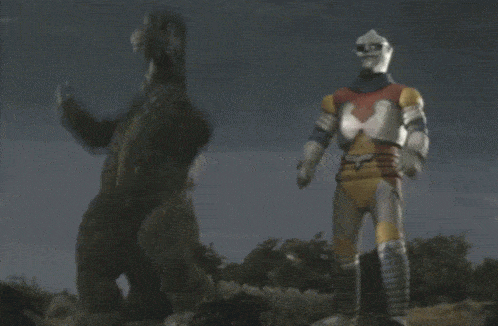
Godzilla in the Monsterverse was much larger and chunkier than his Toho counterparts. During his debut in 2014, Godzilla was 108 meters tall.
He grew to 120 meters in Godzilla: King of the Monsters and Godzilla vs. Kong. Legendary’s depiction of Godzilla is the largest onscreen variant of the character.
In terms of his personality, Legendary’s Godzilla plays the anti-hero role, similar to Toho’s Heisei-era Godzilla. Gareth Edwards describes his 2014 version as taking on the “last samurai” and “lone warrior” archetypes.
Also Read: An Introduction To Monsters From Japan
The monsterverse also introduces beloved Toho Kaiju, known as Titans, in this universe. So far, the Monsterverse has introduced Rodan, King Ghidorah, Mothra, and Mechagodzilla. The Monsterverse has also introduced original Titans, such as the male and female MUTOs.
And, of course, the Monsterverse allowed Godzilla and King Kong to once again cross paths. As of 2022, the Monsterverse is an ongoing franchise that promises more films in the future.
Legendary Monsterverse Godzilla Movies
- Godzilla (2014)
- Godzilla: King of the Monsters (2019)
- Godzilla vs. Kong (2021)
Reiwa era (2016-Present)
Shin Godzilla (2016)
With the renewed interest in Godzilla, Toho decided to finally start making Godzilla films again. Shin Godzilla (also known as Godzilla Resurgence), released in 2016, ushered in a new era of Godzilla films under the Reiwa era.
For Shin Godzilla, Toho recruited Hideaki Anno, best known for the Neon Genesis Evangelion franchise. With its new creative talents, Toho created an iteration of Godzilla fit for a new generation of viewers.
Just like Honda’s Godzilla, Anno’s Godzilla is also born from tragedy. It is directly inspired by the Fukushima Nuclear Disaster and the 2011 Tōhoku Earthquake and Tsunami.
The film depicts Godzilla, similar to a natural disaster made worse by nuclear waste contamination. Shin Godzilla starts as an unidentified creature entering Japan’s coasts. He then continuously evolves into Godzilla’s iconic bipedal form.
Unlike other depictions of Godzilla, Hideaki Anno’s Shin Godzilla is arguably the scariest. The evolutions he undergoes are gruesome. And by the time he hits his final form, Godzilla’s bottom jaw splits.
In addition, Shin Godzilla’s radioactive breath is way more dangerous. He can shoot it from his mouth, his tail, and even from his back.
Hideaki Anno’s Godzilla is far more complex than Honda’s Godzilla from 1954 or Heisei’s Godzilla from 1984. It isn’t innately evil as it has no malevolent intentions. It simply exists, and its actions are a necessity for its survival.
However, Anno’s Godzilla can also be viewed as a being beyond human comprehension. A true god incarnate bringing mankind’s end.
What separates Shin Godzilla is how Hideaki Anno viewed the Japanese people. Just like in the real world Fukushima Daiichi nuclear disaster, the situation worsened due to how the government handled the situation.
In Shin Godzilla, the government believed that Godzilla would die upon reaching the shores of Japan. Their reluctance to take action to minimize civilian casualties ultimately made the situation much worse.
However, despite his criticisms, Anno portrayed Japan as a nation that could come together to overcome the great threat that is Godzilla. Shin Godzilla won many awards, including Best Picture in Japan.
Also Read: Top Sites For Buying Collaboration Goods
Godzilla Earth Trilogy (2017-2018)
The Godzilla Earth Trilogy is a series of anime films produced by Toho. The films explore an alternative post-apocalyptic future where Godzilla takes over the earth, forcing humanity to completely abandon it. Godzilla then shapes the earth during humanity’s absence over the following 20,000 years.
Godzilla Earth (as he is known in this continuity) is the largest incarnation of Godzilla, with a height of 300 meters. He is also the largest Kaiju in the Godzilla franchise.
Reiwa Era Godzilla Movies
- Shin Godzilla (2016)
- Godzilla: Planet of the Monsters (2017)
- Godzilla: City on the Edge of Battle (2018)
- Godzilla: The Planet Eater (2018)
[ad_2]
Source link


